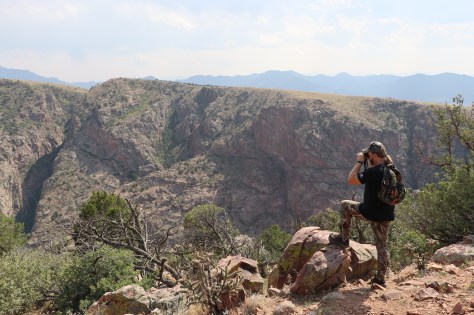On Sept. 4, visitors to a popular Canadian hiking trail found the body of a young (154 pound) grizzly bear.
According to an article at livescience.com, park rangers airlifted the carcass so it did not attract predators to the popular trail and to ascertain the cause of death.
Wounds around the neck and armpit at first confused officials.
A necropsy, however, revealed the culprit.
“The forensic necropsy subsequently confirmed that the wounds incurred before death were consistent with the size and shape of mountain goat horns,” David Laskin, a wildlife ecologist at Parks Canada, told local news outlet Rocky Mountain Outlook.

So, a mountain goat killed a grizzly.
When attending my first-ever journalism class in high school, I remember hearing, “Dog bites man is not a story. Man bites dog is the story you’re looking for.”
Well, mountain goat kills grizzly is that kind of story.
Yes, it was not a full-grown grizzly, and a 154-pound female was probably a year-old cub.
But even at that size, they are formidable predators.
While the size of the goat implicated in this interesting predator-prey scenario has not been determined, a mature billy can weigh as much as 300 pounds.
These are big, strong, incredibly agile animals that can flee or fight.
“Regarding the recent article about the mountain goat potentially injuring and killing a grizzly…that’s something you don’t hear about every day,'” said Lee MacDonalds, Operations Coordinator with the Rocky Mountain Goat Alliance (RMGA).
“I think the takeaway from that article and information from the biologists is that mountain goats (like any large animal, not just predators) have the potential to injure and even kill human-size animals.”

RMGA’s mission is to conserve mountain goat populations and educate the public about these beautiful and unique animals.
“Every year, there are reports of large ungulates in parks injuring humans when they push too close and prompt a defense response. Mountain goats are no different and should be respected,’ MacDonalds said.
“Here in Montana, we have partnered with Montana, Fish Wildlife & Parks, and the U.S. Fish & Wildlife Service to have laminated signs at trailheads in mountain goat areas, helping to warn people not to approach them should they run into one. “
Along with wild sheep, mountain goats represent the best of the American West’s wildlife.
Able to live at the highest elevations and easily move across rocky terrain that few can navigate, they are creatures worthy of our admiration.
And any ungulate that can kill a grizzly in defense is worthy of our respect.
It’s great that a group like RMGA exists to forward the cause of mountain goat conservation.
And this story getting out is a good thing as well.
Maybe it will remind hikers, campers, and others who too often view wild animals on public land as wayward pets to give mountain goats a wide berth.
They might not take too kindly to any attempt to take a selfie with them.
To subscribe to this blog and get weekly cutting edge wildlife news and commentary, enter your email at the prompt on the top right of the page.
Chester Moore






































